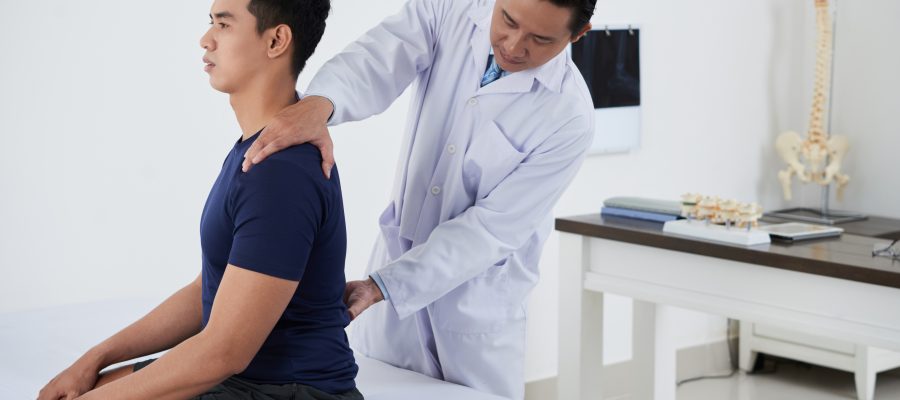
Introduction
Among adults, it has been estimated about 60% to 80% will experience back pain and 20% to 70% will experience neck pain that interferes with their daily activities during their lifetimes.
At any given time, 15% to 20% of adults will report having back pain and 10% to 20% will report neck pain symptoms.
Prevalence of neckache and low back pain in office worker: 42-69% and 31-51% respectively. 5-10% of cases of spinal pain become chronic.
20% lead to pain-related disability one year after the first pain episode. Back pain is one of the most frequent reasons for visiting a general practitioner or physiotherapists.
Risk factors
>25 years of age
More common for females.
Household Work
Household work has significant contribution in occurrence of neck/back pain.
Psychosocial Factors
Psychosocial factors like perceived high pressure on time and workload, low job control, job dissatisfaction, monotonous work, and low support from co-workers and management
Computer Usage
Among participants with prolonged computer usage, back rest fitting to natural back curve and adjustable height of chair were significant factors for occurrence of neck pain.
Status
Age, marital status, socioeconomic class, BMI and type of occupation were found to have statistically significant association with severity of pain.
Posture
Various body postures like prolonged sitting, prolonged standing, frequent bending waist and knee, pulling/pushing heavy objects, frequent heavy weight lifting > 10 kg (for back pain only), prolonged walking and/or standing and repetitive movement of back/neck (for neck pain only) were found to be statistically significant risk factors for occurrence of back/neck pain.
Common Causes of low back pain and neck pain
Prolapsed intervertebral disc (slipped disc)
Lumbar and cervical spinal stenosis
Degenerative arthritis
Trauma such as fractures and sprain
Infections of the spine
Tumors and malignancy
Bad posture causing muscular strain
Whiplash injury to the neck from road traffic accidents
How to avoid pain
Awareness of good posture and practise this.
Adjust table height so you do not flex and extend your neck too much when doing work
Less phone/computer screen time
Stand stand stand! And…. Walk walk walk! Do not stay in a position for too long. Constant mobility is important to avoid stress on the spine!
Lose weight. Being overweight makes it difficult for you to maintain good posture
Exercise regularly. Good strong core muscles allow you to keep good posture.
Stop smoking. Slow down the degenerative process of your spine!
When do you need to see an orthopaedic or spine specialist early:
Constant severe pain over days/weeks
Pain or sensation of numbness, pins and needles in one or both arms and legs.
Weakness of arms and legs, difficulty in walking and unsteady walking
Bladder/bowel problems (eg.incontinence) associated with neck or back pain.
General symptoms of poor health like loss of appetite, weight loss, lethargy, fever and chills.
Previous history of cancer
What we can do in Total Orthopaedic Care & Surgery (TOCS)
At TOCS, we provide a comprehensive assessment and care to best address your spinal issues. This commonly includes further imaging like X-rays, MRI scans and potentially CT scans to delineate the issue at hand. Our orthopaedic specialist will provide consultation for a wide variety of spinal conditions ranging from degenerative to traumatic conditions and even daily neck and back pain. We offer a variety of treatment modalities to alleviate your symptoms and help you regain your mobility and achieve a pain free quality of life. We believe no spinal symptoms should be neglected as they may become bigger problems in the future.

Common spinal conditions that we treat:
Cervical radiculopathy
Compression of nerves in the cervical (neck) region of the spine causes symptoms of tingling and pain, and sometimes numbness from the neck to the shoulders and arms all the way to the hands and fingers.
Lumbar spinal stenosis
Compression of the nerves in the spinal canal due to age related tightening of the central spinal canal will produce symptoms of pain/aches related to walking over distances (claudication pain) that usually radiates to the calf/calves, occasionally to the feet as well.
Cervical myelopathy
Compression of the spinal cord causing loss of balance and clumsiness of the hands, with the loss of fine motor skills of the hands. Weakness of the legs may also develop and patients may not be able to walk properly.
Cervical spondylosis
Age related degeneration of the spinal discs and joints causing neckache.
Prolapsed intervertebral disc
Sometimes trauma and degeneration causes the extrusion of spinal discal materials into the spinal canal causing compression of nerves in that area, usually producing SCIATICA pain that radiates to the legs and feet.
Lumbar spondylosis
Age related degeneration of the spinal discs and joints in the lower back that causes low back pain and stiffness.



